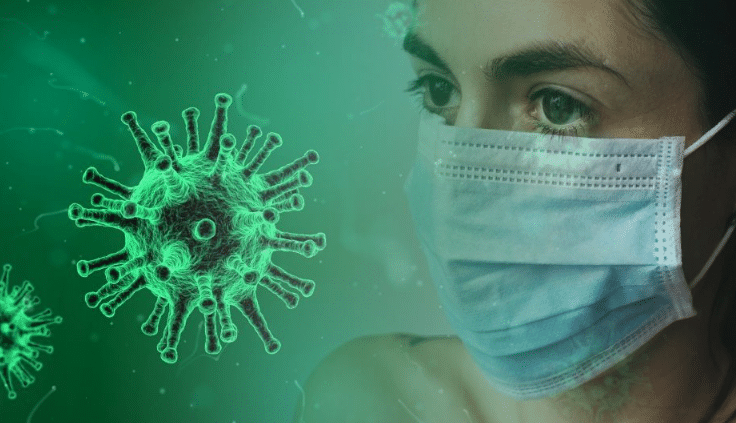Determining the duration of protective immunity after SARS-CoV-2 infection is vital to understanding and predicting the course of the pandemic COVID-19. A key question is, how long does this immunity last?
Doctors of the 2rd University Pathology Clinic of "I SOTIRIA" Hospital, one of the hospitals that received the largest volume of pandemic patients and started vaccinations in Greece, under the supervision of Professor Konstantinos Syrigos, record the latest data as analyzed in in Nature by Turner et al and Wang et al. which describe the human immune response to SARS-CoV-XNUMX infection over one year.
There is ongoing debate about which immune responses to SARS-CoV-2 confer immunity to the virus. However, there is agreement that the two main pillars of the antiviral response are:
1. immune cells called cytotoxic T cells, which can selectively kill infected cells; and
2. Neutralizing antibodies, which prevent a virus from infecting cells.
These are secreted by immune cells, called plasma cells.
A third pillar of an effective immune response would be to generate helper T cells that are specific to the virus and coordinate the immune response. Basically, these latter cells are needed to build up immune memory, now as plasma cells, which continue to secrete antiviral antibodies even when the virus is gone.
Virus-specific B and T cells, which are memory cells, remain dormant and ready to be activated if they encounter the virus again or a vaccine that represents it. These B and T memory cells are derived from activated cells during the initial immune response. The stem cells undergo changes in their chromosomal DNA, called epigenetic modifications, and allow them to respond quickly to infections, with responses aimed at eliminating the disease-causing agent.
B cells have a dual role in immunity, on the one hand they produce antibodies that recognize viral proteins and present part of these proteins in specific T cells and on the other hand they can develop into plasma cells which secrete antibodies in large quantities. About 25 years ago, it became apparent that plasma cells could transform themselves into memory cells by secreting antibodies for long-term protection and retaining in the bone marrow for decades and possibly a lifetime.
The presence in the bone marrow of memory plasma cells secreting antibodies is probably the best available prognostic factor for long-term immunity. For SARS-CoV-2, most studies to date have analyzed the acute phase of the immune response, which extends to a few months after infection, and have monitored T cells, B cells, and secreted antibodies. It remains unclear whether this response generates memory plasma cells that secrete antibodies to SARS-CoV-2.
Turner and his colleagues took on the challenge of locating memory plasma cells that secrete antibodies into the bone marrow of people who have recovered from COVID-19. Memory plasma cells are generally rare and those that are specific to a particular factor will obviously be extremely rare. Nevertheless, Turner and colleagues identified memory plasma cells that secrete antibodies specific for the SARS-CoV-2-cod protein spike in 15 of 19 people, about 7 months after infection. Re-analysis of samples from the same individuals was followed 4 months later (i.e. 11 months after initial SARSCoV-2 infection). It was found that the number of these plasma cells remained constant in all but one. These plasma cells did not proliferate, which ranks them in memory cells and their numbers were equal to those of memory plasma cells found in individuals after tetanus or diphtheria vaccination.
When Turner and his colleagues monitored SARS-CoV-2 antibody concentrations in the blood serum of individuals for up to a year, they observed a biphasic pattern. In the acute immune response around the time of the initial infection, antibody concentrations were high, then decreased, and after a few months remained more or less stable at about 10-20% of the initial maximum. This is in line with the expectation that 10-20% of acute immune response plasma cells become memory cells, and is a clear indication of the change, from short-lived antibody-producing plasma cells to memory plasma cells with the same role. This is not unexpected, since immune memory in many viruses and vaccines is stable for decades, if not a lifetime.
For SARS-CoV {cause of Acute Respiratory Syndrome (SARS)}, a SARS-CoV-2-like coronavirus originally detected in 2003, reported in 2020, ie for more than 17 years, the continued presence of high levels of neutralizing agents antibodies to blood serum. The results of Wang and his colleagues show that similar long-term immunity is expected for SARS-CoV-2. The authors report research monitoring serum antibodies and B cells specifically for SARS-CoV-2 approximately one year after infection. The subjects were previously screened by Wang's team six months after the illness. Now, a year later, the transition from an acute immune response to the creation of immune memory has become apparent, with the concentration of neutralizing antibodies remaining unchanged. The fact that the acute immune response extends beyond six months is suggested by the authors' analysis of the presence of memory B cells, versus SAR-CoV-2, in the blood of individuals who recovered during the year. The authors demonstrated this with in vitro neutralizing antibody measurements for many mutant strains of SARS-CoV-2.
Finally, Wang and his colleagues showed that immunity can be further enhanced in people who recover by vaccinating them after one year. This resulted in the formation of more plasma cells, along with an increase in the level of SARS-CoV-2 antibodies that was up to 50 times higher than before vaccination. Some of these plasma cells, which appear after vaccination, will probably turn into memory cells, but this is something that has not yet been proven.
In conclusion, the data so far show that SARS-CoV-2 infection causes long-term immunity in most people. This is a welcome positive note as further data on immune responses and immune memory after vaccination are expected.
Source: Ygeiamou.gr
